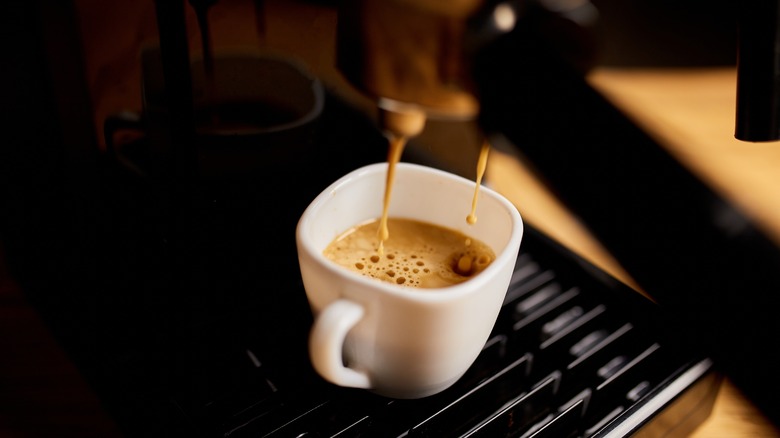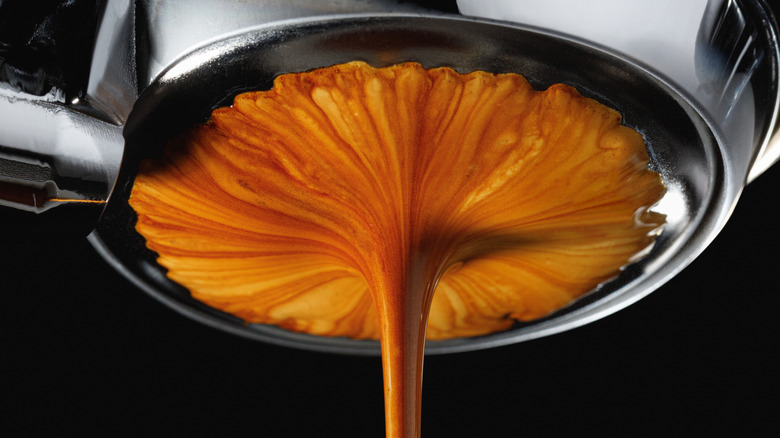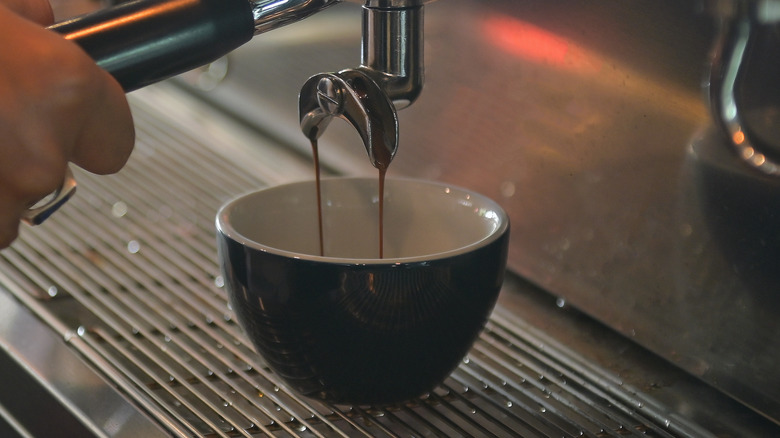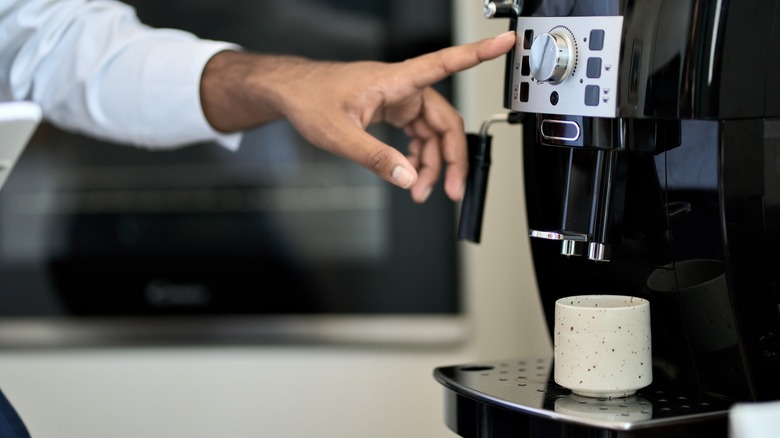What Is A Wet Dose & Why Is It Important For Making Espresso?
If you've ever been baffled by the terminology presented to you on your local cafe's artfully decorated chalkboard menu, you're not alone. For the average person just looking for a regular cup-o-joe, the lingo of baristas, roasters, and coffee enthusiasts seems as strange and made-up language as Klingon. However, those looking to extend their coffee game beyond a simple drip machine would do well to understand some of the finer points of brewing, as they are essential to making a truly great cup of coffee.
Nowhere is this more true than with espresso. The amount of work that goes into dialing in a shot of espresso may not seem equitable, given the size of the drink. What you get for your effort, though, has the potential of being the best cup of coffee you've ever had, provided you've got patience with the learning curve.
Every part of the espresso process matters, from machine choice, to grind size to extraction ratios. If you're having trouble dialing the espresso to your liking, a few terms and tricks could help improve your brew. Understanding the importance of the wet dose is paramount, for it's the wet dose that really determines the quality of the espresso you're brewing. The right machine and understanding of the chemistry and ratios of the extraction process will help point you in the right direction for dialing in your espresso.
What is a wet dose?
Dosing espresso is split into two parts. You have your dry dose, which is the weight of your freshly ground coffee, and your wet dose, which is the weight of the extracted espresso. It is beneficial to have a gram scale near your brewing station to get exact measurements for both doses. The beauty of dialing in your espresso based on the flavor of the wet dose is that you don't need to be too stingy about the size of your grind.
The process of turning the dry dose into a wet dose is called extraction. The chemical reactions during extraction revolve around the solvency of the water used. Water comprises two hydrogen atoms, which have a positive charge, and one oxygen atom, which has a negative charge. By heating water for extraction, the water molecules begin to move faster and increase the solvency of the water. The negative and positive charges pull apart the molecules in the coffee grind, playing with the compounds and oils to transform the water into coffee.
While the grind size and the chosen roast play essential roles in developing flavor, the length of the primary reaction between the water and coffee beans is key to getting the wet dose right. Getting this right can be tricky. Fortunately, there is a simple ratio to go by to get a good yield without overthinking the process.
Wet dose ratios can be adjusted according to your taste
There is a simple equation used to calculate the brew ratio of your espresso: your wet dose divided by your dry dose equals your brew ratio. (Note that all weight measurements for coffee are done in grams and should be calculated as such). A prime example of this is the Heritage espresso ratio, which is a 36.5-gram wet dose to an 18-gram dry dose, giving you a yield of 2. This is the classic benchmark for a medium-strength espresso.
You can fuss with ratios to your heart's content to find the yield that is right for you. A more simplified version of the Heritage ratio is the 1:2 ratio. For every 10 grams of ground coffee, you aim for a 20-gram wet dose. Staying within these ratios is going to give you a yield from which you can establish a flavor base upon which to judge future brews.
Tasting your wet dose can easily determine whether it is under or over-extracted. This, in turn, will tell you whether you need to increase or decrease your wet dose. Flavor-wise, an under-extracted yield is a highly concentrated liquid with a very sour, sludgy taste. In this case, increase your wet dose extraction. On the opposite side of the coin, an over-extracted yield will be watery and dull, which means you need to decrease your wet dose extraction. You're aiming for somewhere in the middle that gives the espresso a sweet complexity with an acidic finish.
Go with a pump-powered, a fully automatic, or a semi-automatic machine
Anyone looking to get into the home espresso game will have to put up with a decent amount of upfront costs. You need to be willing to spend over $100 for a halfway-decent home espresso machine and at least $500 for a really good one.
Your ultimate choice is between pump-powered, fully automatic, and semi-automatic machines. The former does everything for you. Grind, weigh, brew — the whole shebang. This may seem more than tempting to a beginner home brewer. However, be aware that the automated machine totally controls the outcome of your espresso. If you want to personalize your brew by fiddling with the wet dose ratio, you're better off with a semi-automatic.
The semi-automatic espresso machine gives you a fair amount of autonomy. These machines don't come with their own grinders, so you can set yourself up for a good wet dose by personalizing the dry dose with your preferred grinder. They also don't come equipped with pre-programmed brew times, meaning you can play with the extraction amount until you get a wet dose that perfectly caters to your preferences. Going this route takes a little extra work — but if you're going to make that machine pay for itself in coffee, it should be brewing stuff you actually like to drink.



